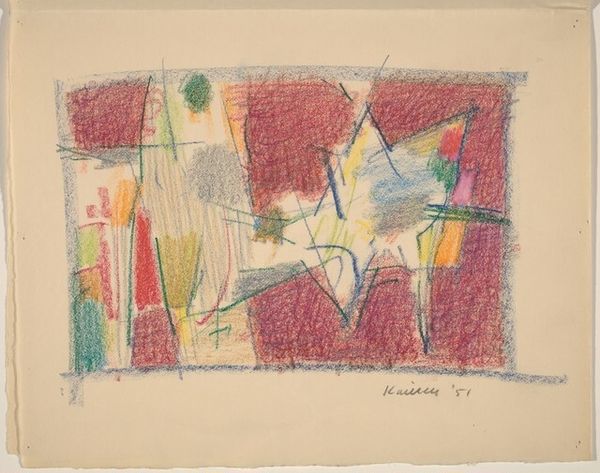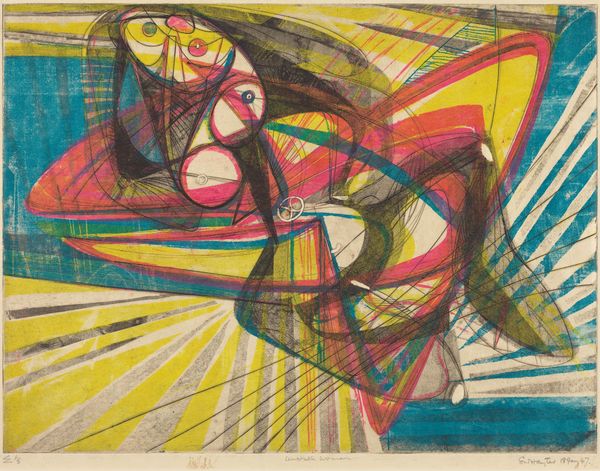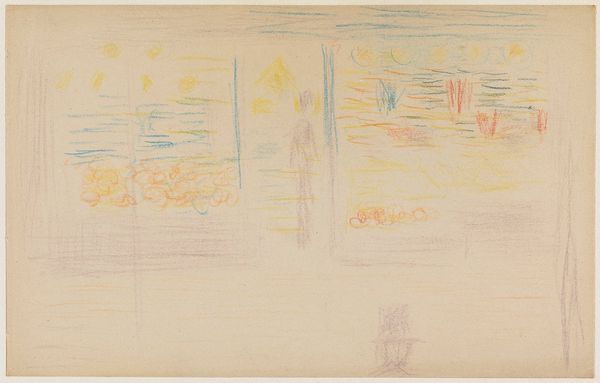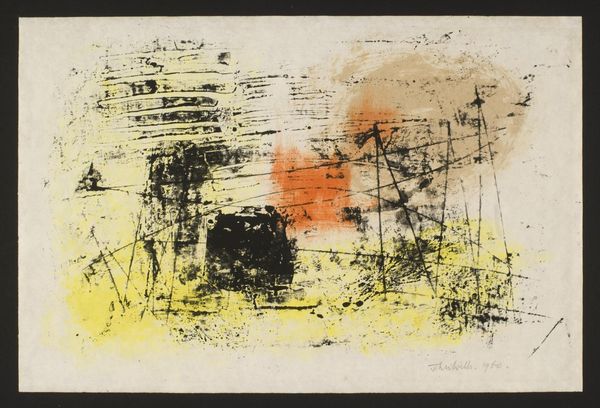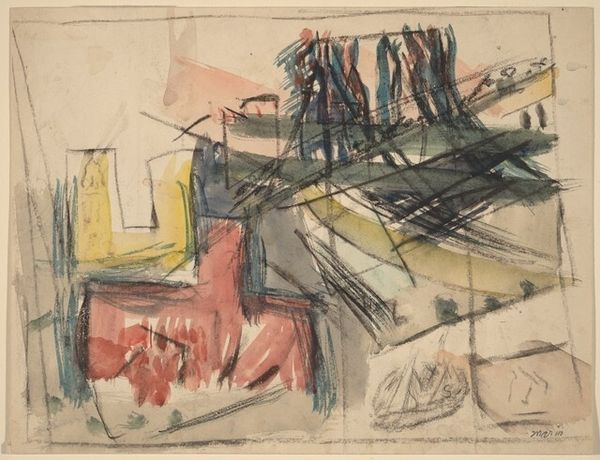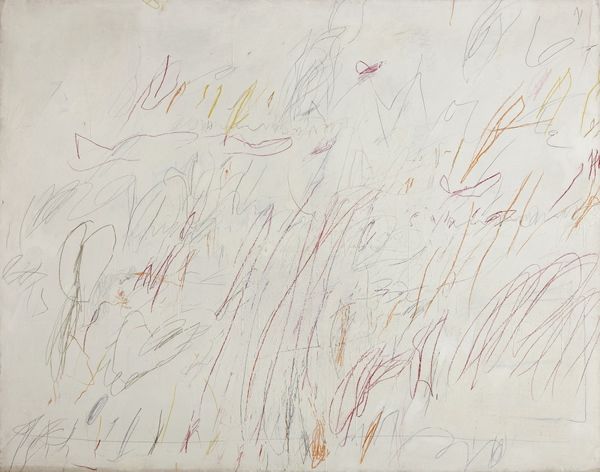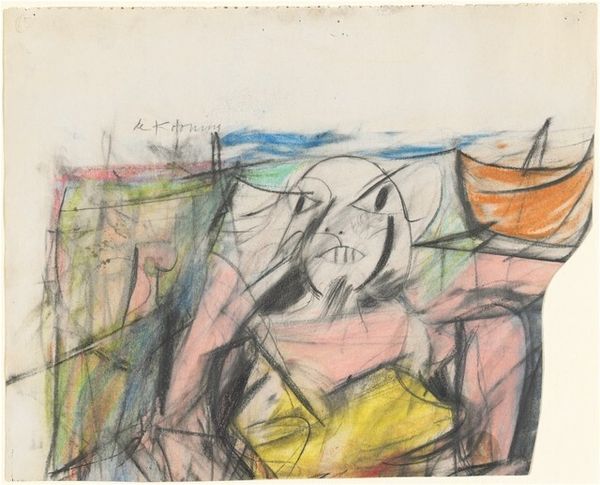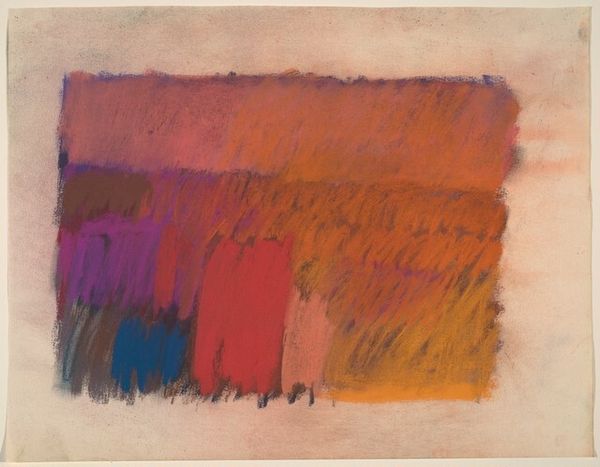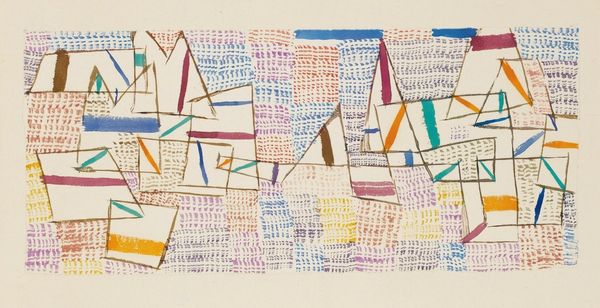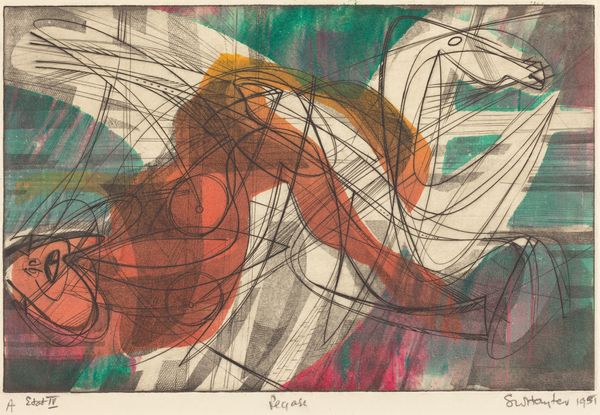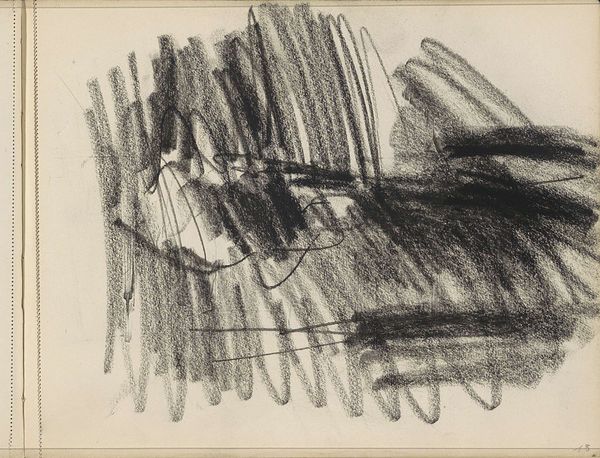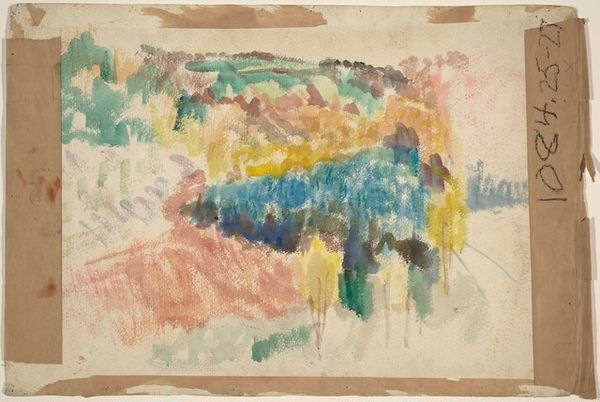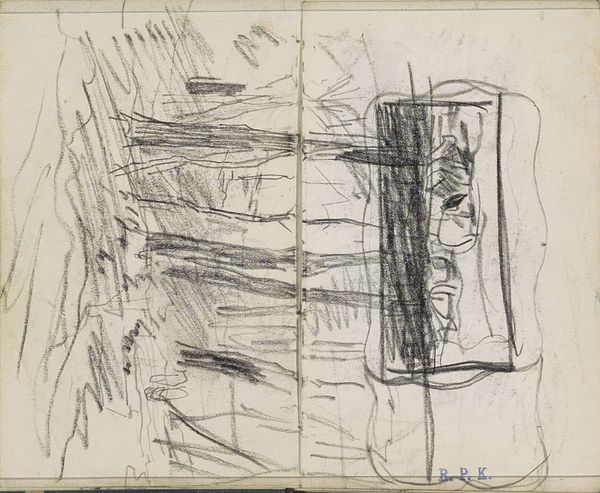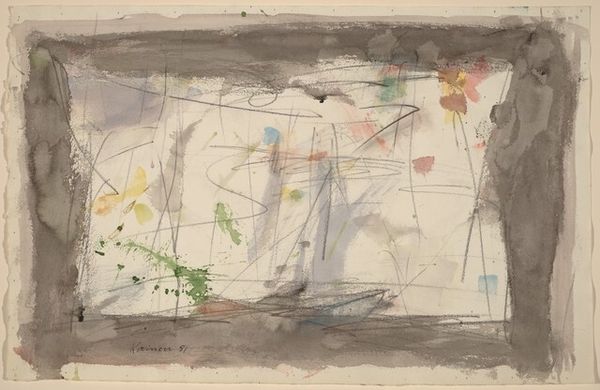![Dance I [one of two drawings on folded sheet] by Jacob Kainen](/_next/image?url=https%3A%2F%2Fd2w8kbdekdi1gv.cloudfront.net%2FeyJidWNrZXQiOiAiYXJ0ZXJhLWltYWdlcy1idWNrZXQiLCAia2V5IjogImFydHdvcmtzLzI1YzFlNjM2LTMwNjAtNGVmYi1hNDc5LTdjNmFiMWQ5MjMzNy8yNWMxZTYzNi0zMDYwLTRlZmItYTQ3OS03YzZhYjFkOTIzMzdfZnVsbC5qcGciLCAiZWRpdHMiOiB7InJlc2l6ZSI6IHsid2lkdGgiOiAxOTIwLCAiaGVpZ2h0IjogMTkyMCwgImZpdCI6ICJpbnNpZGUifX19&w=1920&q=75)
drawing, pastel
#
abstract-expressionism
#
drawing
#
form
#
abstraction
#
line
#
pastel
Dimensions: image: 16 x 25.1 cm (6 5/16 x 9 7/8 in.) sheet (folded): 22.5 x 28.4 cm (8 7/8 x 11 3/16 in.)
Copyright: National Gallery of Art: CC0 1.0
Editor: This is Jacob Kainen's "Dance I," created in 1951 using pastel as a drawing medium. It's really striking, the colors feel both vibrant and restrained. How do you interpret this work? Curator: What strikes me is how Kainen, working in the post-war period, uses abstraction to grapple with complex emotions and societal shifts. The term "Dance" evokes movement, freedom, perhaps even catharsis. Yet, the confined space and layered, almost chaotic lines suggest something more complicated – perhaps the tensions and anxieties of the Cold War era. How do you see the relationship between form and content here? Does the abstraction serve a specific purpose beyond aesthetics? Editor: That's a good point. I hadn't considered the Cold War context. I was mainly focused on the visual aspect, like how the bold lines create a sense of energy, but your suggestion about tension makes sense, it feels quite pertinent. The form might reflect the fractured and uncertain world of the time. Curator: Exactly. The visual fragmentation can be seen as a direct response to the experience of living through rapid social and political changes. Think about how abstract expressionism, as a broader movement, became a way for artists to explore psychological and emotional landscapes in the face of unprecedented global events. Where do you think Kainen positions himself within that movement with a piece like this? Editor: I guess he's using abstraction to speak about his time. Thanks to you, now I look at the artwork with a different set of considerations. Curator: It's about engaging with art as a mirror reflecting our own experiences and understanding.
Comments
No comments
Be the first to comment and join the conversation on the ultimate creative platform.
